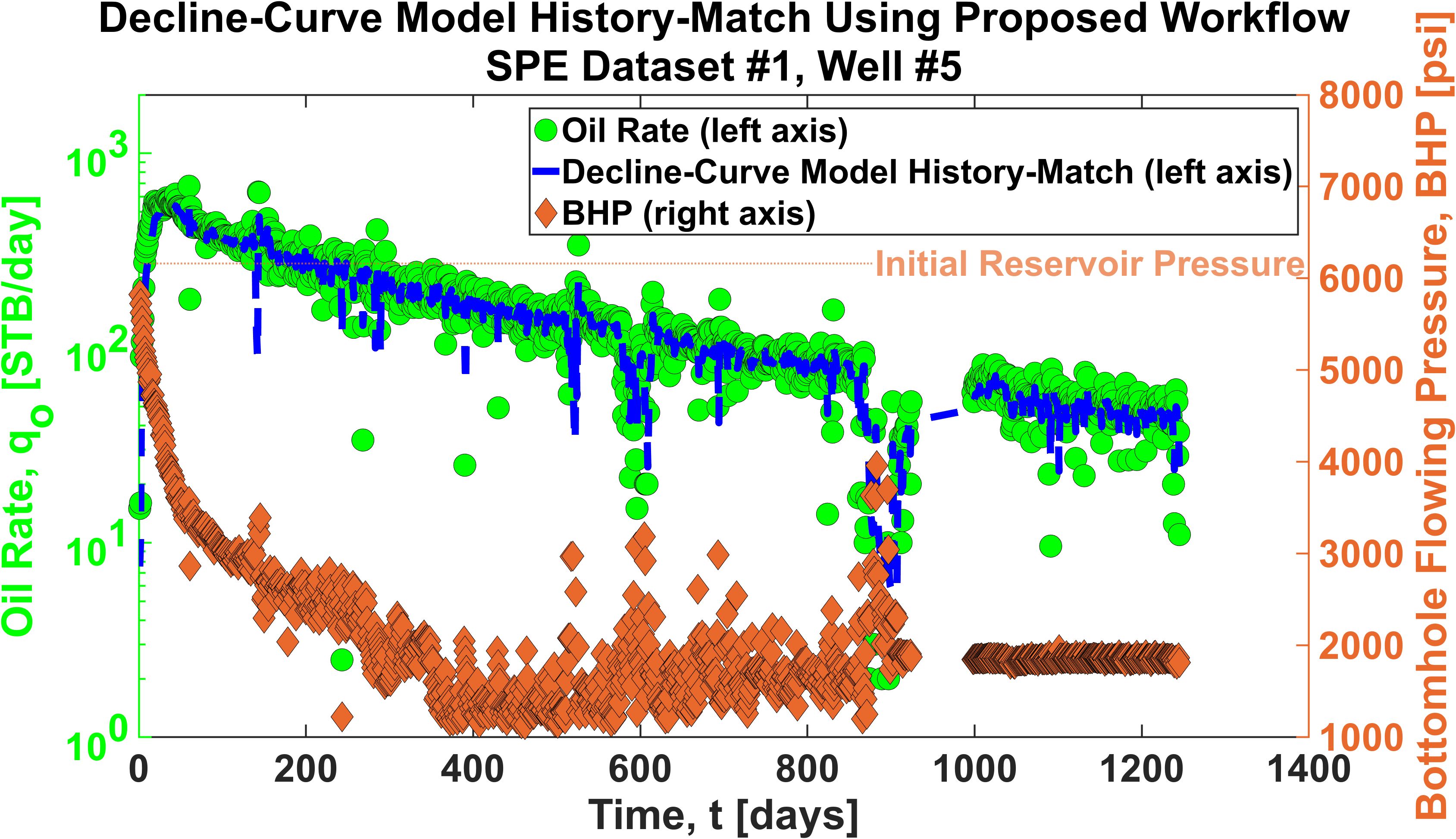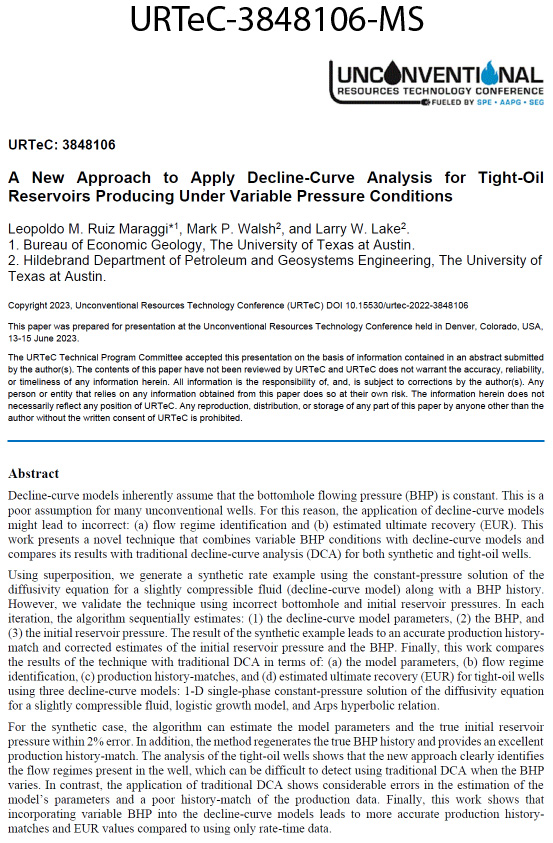
Motivation
Decline-curve models inherently assume that the bottomhole flowing pressure (BHP) is constant. This is a poor assumption for many unconventional wells. This work presents a novel technique that combines variable BHP conditions with decline-curve models and compares its results with traditional decline-curve analysis (DCA) for tight-oil wells.
Key features of this technique are the following:
- It incorporates variable BHP conditions for any decline-curve model.
- It handles possible errors present in both the BHP and the initial reservoir pressure.
- It estimates BHP history consistent with the decline-curve model history-match.
- It estimates the initial reservoir pressure consistent with the decline-curve model history-match.
- It requires minimal time to run.

Comparison With Other Techniques

Rapid RTA is fast, robust, accurate, and can use any decline-curve model.
Application Description
The Rapid RTA web-based application incorporates variable BHP conditions for decline-curve models. It allows the users to upload and analyze their own data and history-match and forecast the production using 3 decline-curve models. The use of the web-based application is only for the purpose of illustrating the technique.
Access to Rapid RTA Web-Based Application V1.0
Development of this application is funded by the State of Texas Advanced Resource Recovery (STARR) program.
If you have any questions, please contact Dr. Leopoldo M. Ruiz Maraggi (leo.ruiz@beg.utexas.edu), Dr. Lorena Moscardelli (lorena.Moscardelli@beg.utexas.edu), Dr. Mark P. Walsh (drmwalsh@utexas.edu) or Dr. Larry Lake (larry_lake@mail.utexas.edu)
The python code associated with this application is under license by The University of Texas at Austin via the Office of Technology Commercialization (OTC). You can contact OTC via Dr. Robert Villwock (bvillwock@otc.utexas.edu) and/or Agapito Sustaíta (agapito@Austin.utexas.edu)


